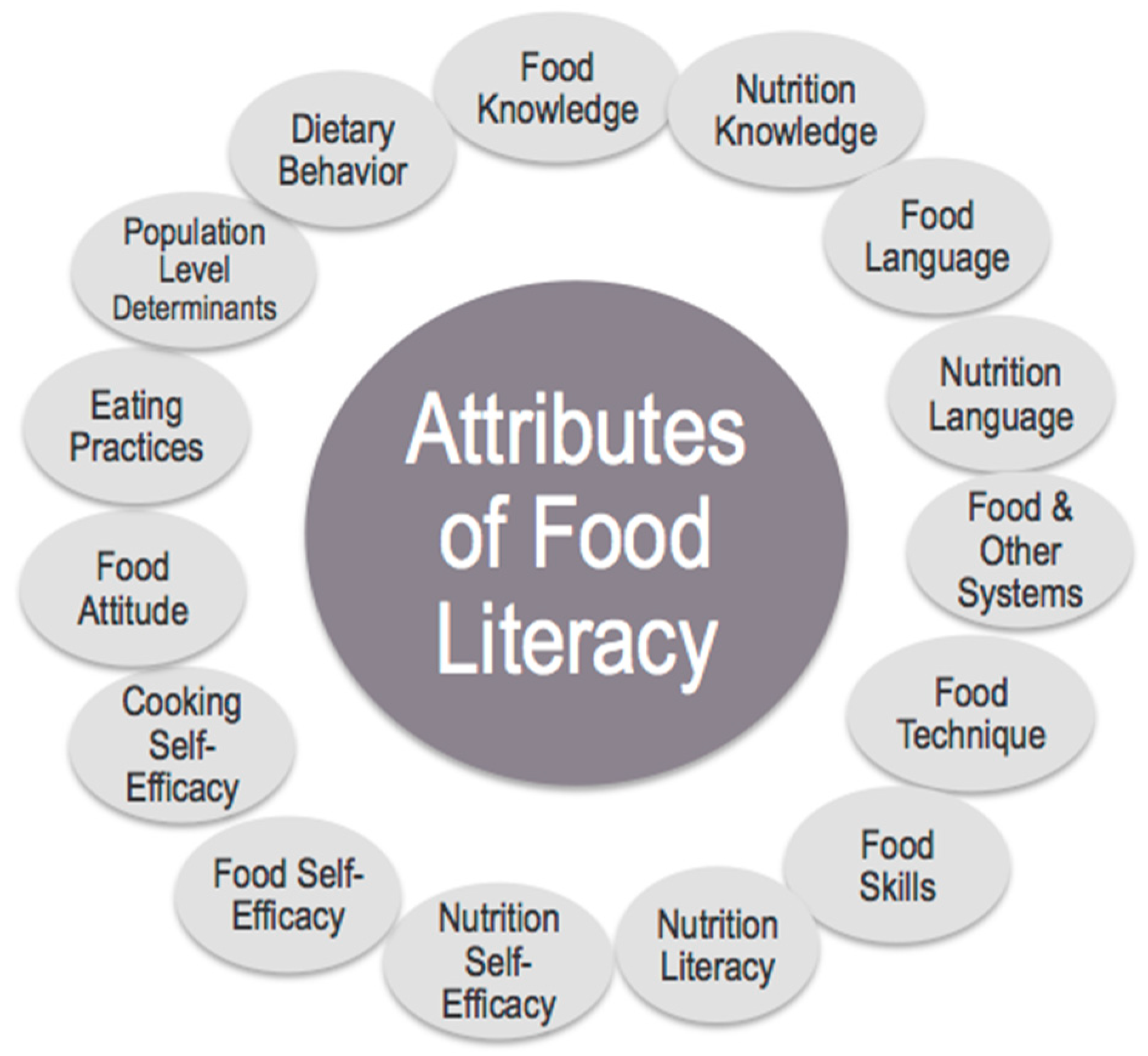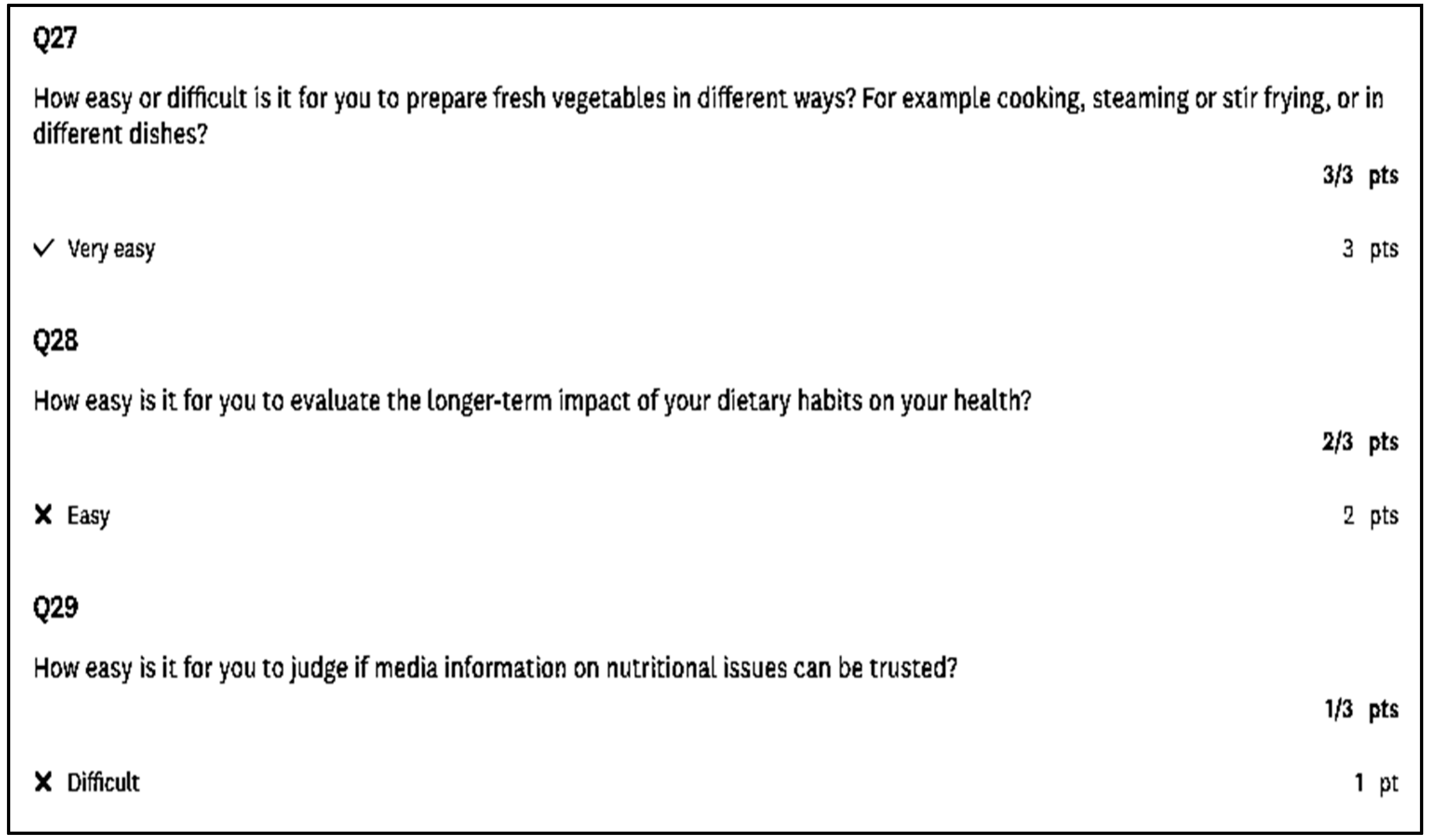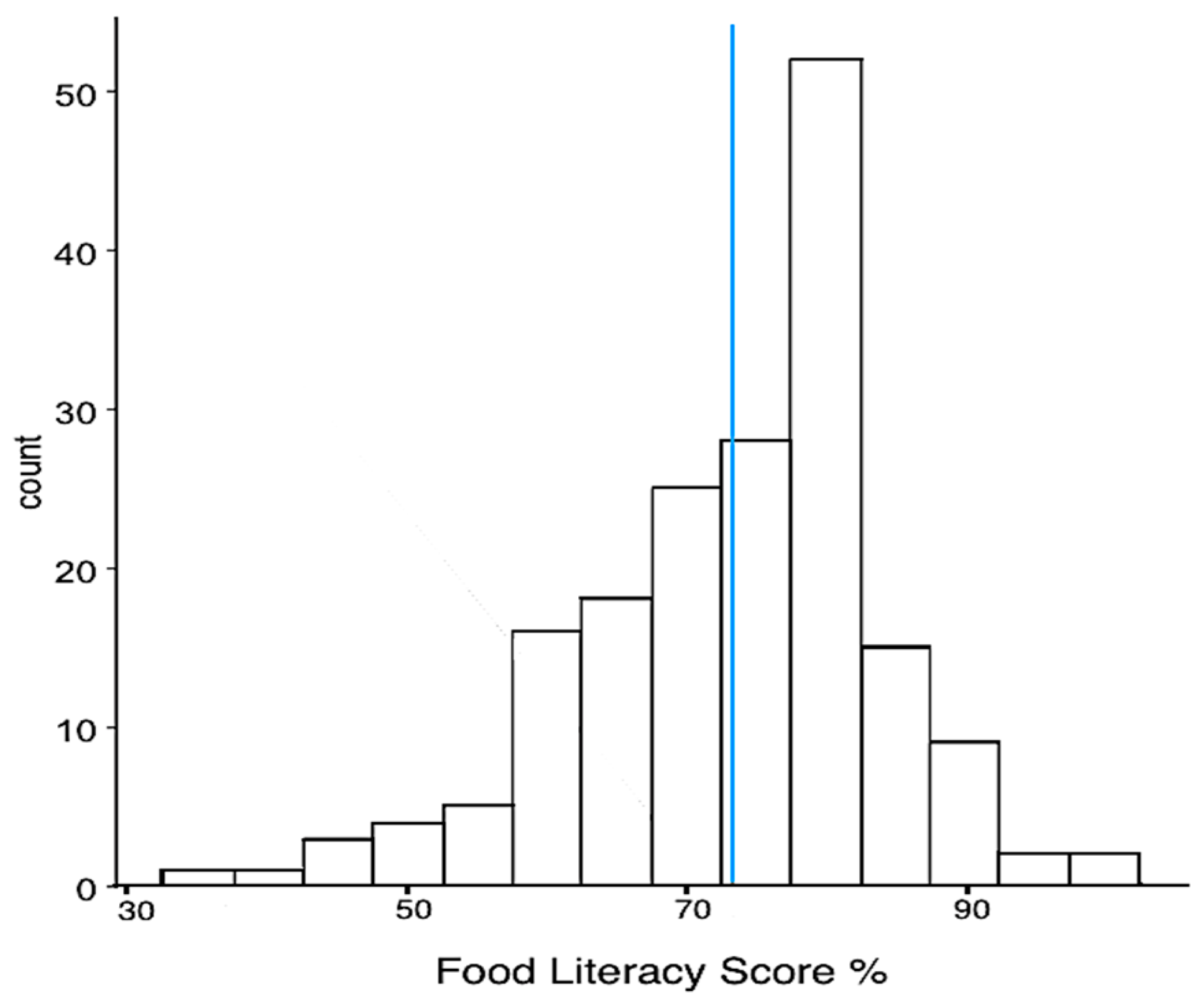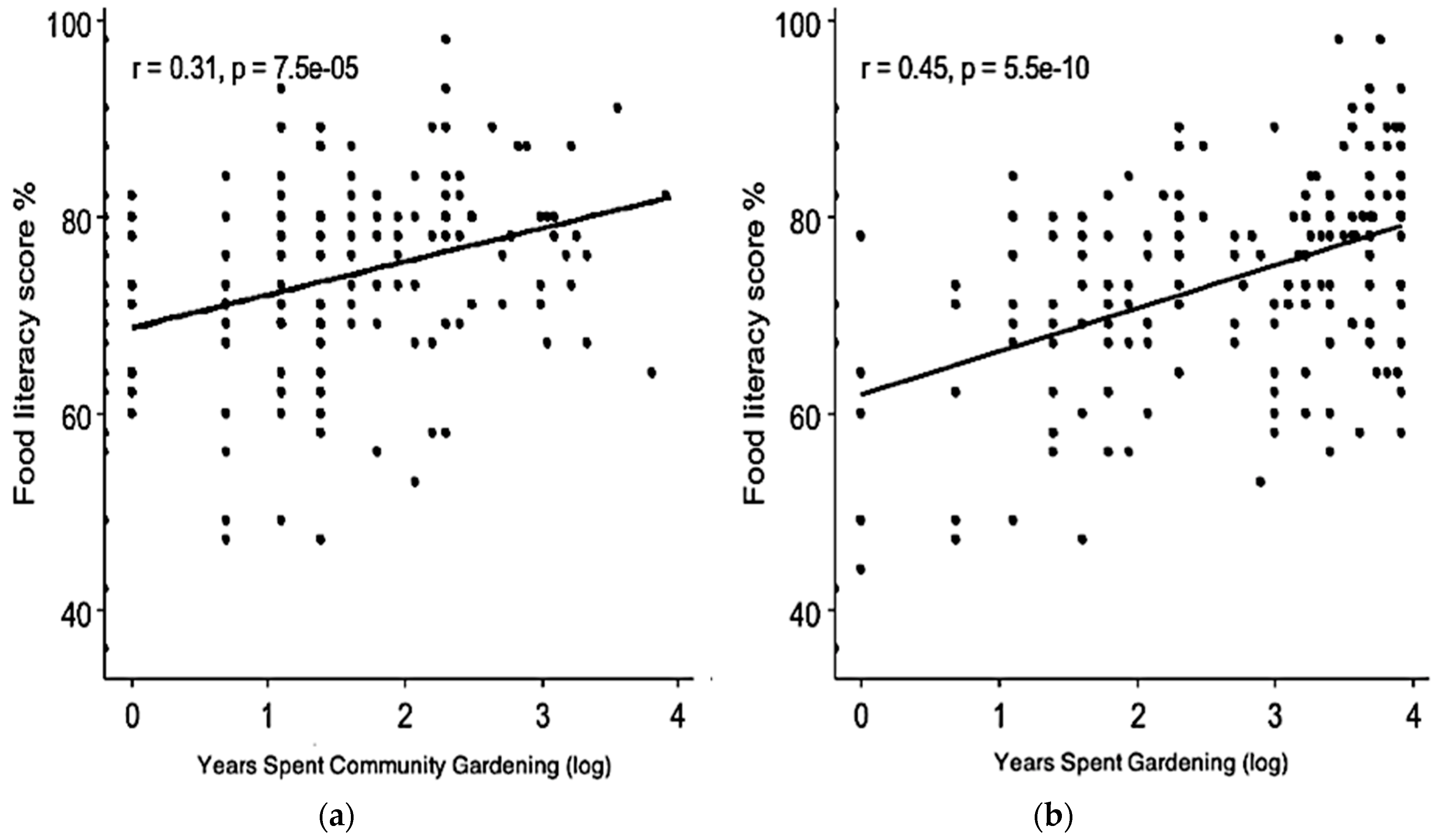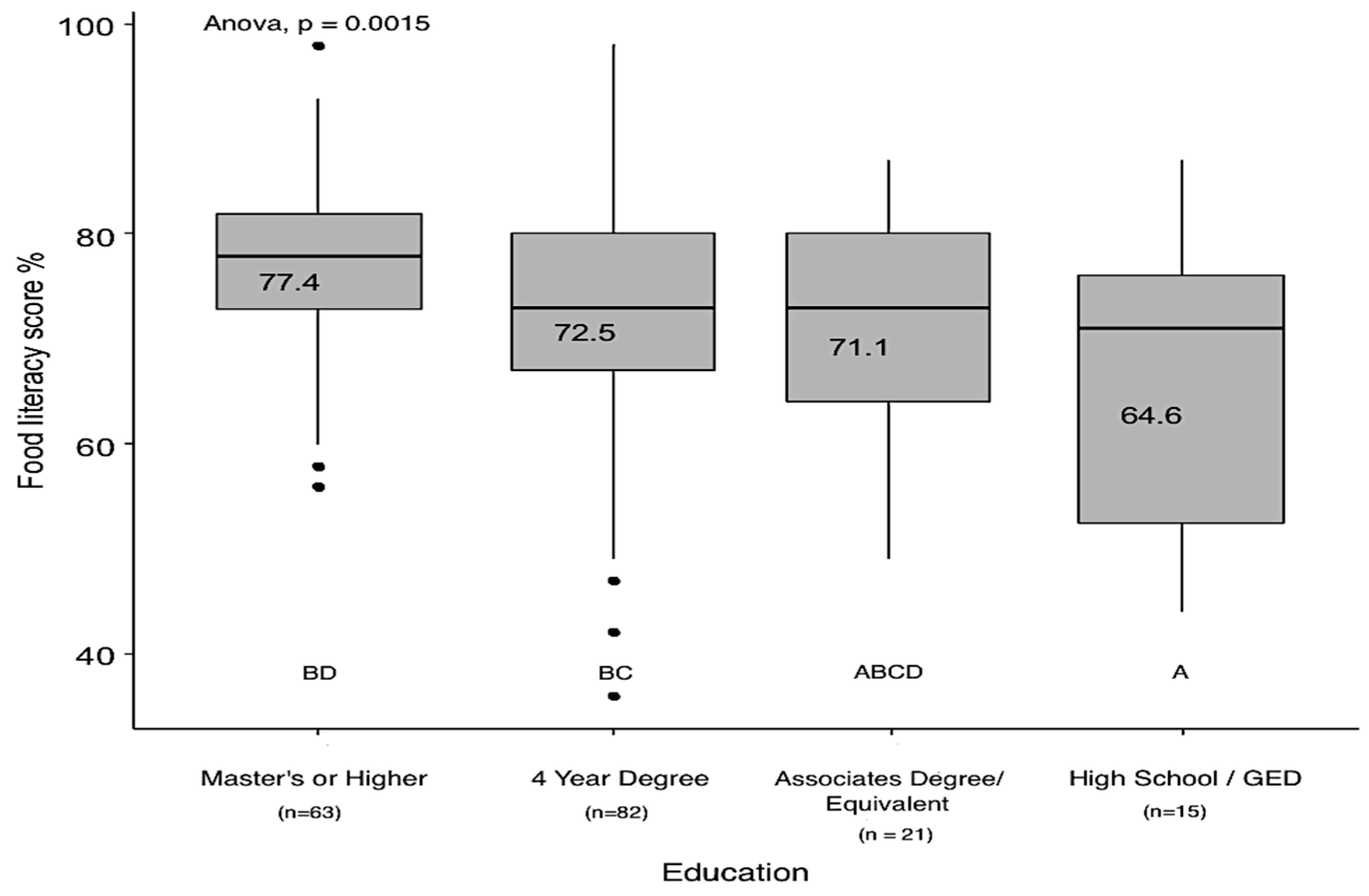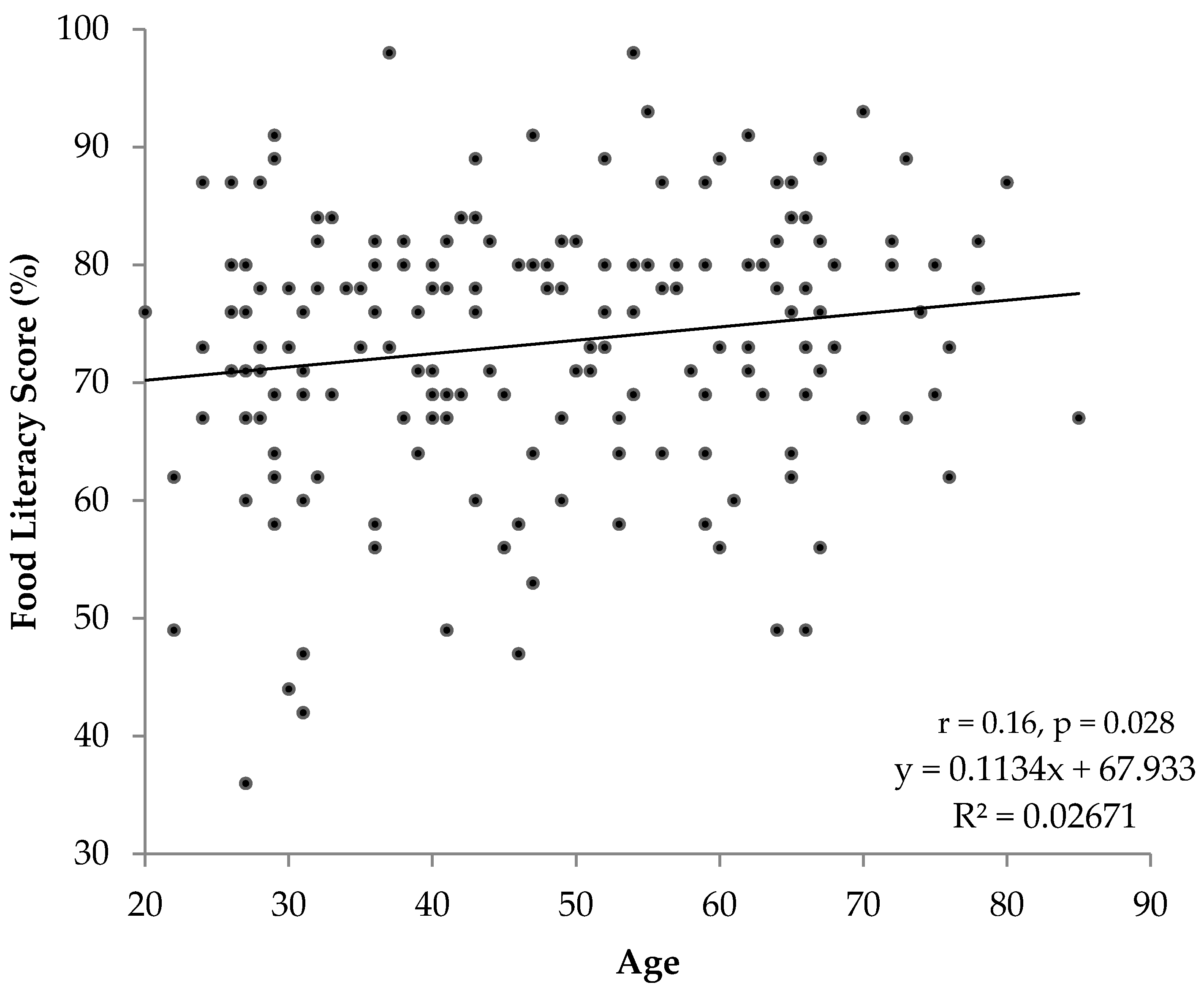1. Introduction
More than 80 percent of Americans now live in urban areas [
1]. This great migration to cities has allowed individuals to become increasingly spatially and psychologically distanced from the food system and agricultural practices [
2]. Yet, some residents of cities, often labelled urban gardeners or urban farmers, have continued to produce their own food and stay connected to the food system. Urban gardening remains important, in part, because it has the potential to expand local and sustainable food production and develop food skills among its participants [
3].
Although there are some urban residents growing a portion of their own food, the public’s general knowledge about food remains relatively low [
2]. A recent poll of 1,000 Americans indicated that nearly 50% never or rarely seek out information about where their food was grown or how it was produced. Moreover, one-third of the people surveyed did not know that non-GMO foods contained genes [
4]. Comical at first, the example nevertheless reveals an increasing problem in America regarding the lack of knowledge about food [
5].
Additionally, a perceived decline in food related knowledge and skill sets is linked to the exceptional rise in obesity and diet-related disease in developed countries [
5,
6]. According to a recent Center of Disease Control (CDC) report on obesity statistics, the organization estimated the prevalence of obesity among adults at an alarming 40% [
7,
8,
9].
A relatively new approach, food literacy (FL), has emerged as a comprehensive metric to address complicated public health concerns ranging from diet-related illness to environmental sustainability. Food literacy describes a gamut of food-related skills, knowledge and attitudes that promote personal health and wellbeing [
10]. Adequate food literacy is associated with a healthier diet, smaller portions and a reduction in processed and fast foods. On the other hand, insufficient food literacy is associated with an absence of food skills like cooking and food preparation, which are believed to hinder healthy dietary practices and can produce significant environmental and societal consequences [
11,
12,
13]. Considering increased food literacy has great potential for improved individual and societal outcomes, understanding strategies to develop food literacy is in the interest of both policy makers and researchers alike [
13].
The definitions researchers have provided for food literacy have varied greatly and continue to develop according to new research. Currently, there is no consensus definition of food literacy; although some definitions are cited more frequently than others, the term is often used contingent on the context of the research [
14,
15,
16].
The concept of food literacy developed by Vidgen & Gallegos [
6] is one of the most cited definitions and approaches to describing food literacy in academic research [
17]. Vidgen and Gallegos [
6] described food literacy as, “the scaffolding that empowers individuals, households, communities or nations to protect diet quality through change and strengthen dietary resilience over time. Food literacy is composed of a collection of inter- related knowledge, skills and behaviours required to plan, manage, select, prepare and eat food to meet needs and determine intake.” Yet, this definition put forth by Vidgen & Gallegos [
6], like many others, has not gone without criticism. The definition does not focus on nutrient acquisition or avoidance and there is an absence of any psychological variable in this model [
5]. Moreover, environmental health and social justice are also not prioritized in this definition, whereas others have included these aspects [
8].
More recently the topic of food literacy has been developed into a conceptualization or framework of food literacy. Perry et al. [
16] constructed five key themes of food literacy and fifteen attributes within these themes, incorporating numerous food literacy definitions and characteristics (
Figure 1).
A benefit of this framework by Perry et al. [
16] is that it incorporates numerous food literacy definitions and characteristics. Many early studies lacked a holistic perspective and they often focused on health or nutrition while overlooking aspects of environmental sustainability and social equity [
18]. But, a person cannot be separated from their environmental or social circumstance and consequently it is key to incorporate a more holistic approach when measuring food literacy. The framework put forward by Perry et al. [
16] is more inclusive of these themes and provides our framework to conduct FL research.
A narrow conceptualization of the food literacy framework is often limited to only an individual’s knowledge of food; however, a broader conceptualization of FL can expand this analysis to measure an individual’s understanding of their place and impact in the food system at large [
18]. Urban gardening is one of these “places” or local contexts, where on some level growers take on the role of buyer, farmer, harvester, distributor, cook and customer may have the potential to expand people’s knowledge of this otherwise foreign system and drive appreciation for sustainable practices throughout.
Urban gardening has been linked to food literacy because it can be viewed as a way to improve both implicit and explicit knowledge of food production, seasonal foods, basic primary food products and food safety measures. Urban gardening has also been proposed to potentially increase participation in the local food system and improve ecological citizenship [
19]. Moreover, gardening can result in improved fruit and vegetable intake, physical activity, dietary diversity, mental health, access to cultural foods and food security [
20,
21]. These reported changes in food behaviours and skills from gardening clearly overlap within the sphere of food literacy, yet, very little academic research has explored the relationship between food literacy and urban gardening [
19].
Research indicates community gardening also promotes healthy food related behaviours [
22,
23]. Community gardens, “represent everyday landscapes that connect people to nature, require active and sustained involvement by participants and enable participants to engage with others directly and indirectly, thereby gaining knowledge about ecological systems, the growing and preparing of food, and, more broadly, about health and wellness” [
22]. Moreover, community gardens provide additional educational opportunities, like the chance to participate in educational outreach programming which promotes the understanding of nutrition, recipe sharing and cooking instruction [
6,
22,
24,
25]. However, community gardening has not been viewed through the lens of food literacy and provides an interesting area for research [
19].
Improving food literacy via gardening may contribute to urban sustainability in each of its dimensions, including the preservation of the environment and to the social and economic well-being of individuals. The opportunity for improvements in diet, a greater ability to make a positive environmental impact through food choices and production, economically through smarter sourcing and socially through engagement with other gardeners are all important parts of this sustainable system. Considering food literacy is such an important determinant of good health, ecological sustainability and social equity, understanding strategies to develop food literacy is essential [
13,
18].
The current research addressed three primary hypotheses regarding the potential relationships between urban gardening and food literacy among adults. The hypotheses were: (1) more time spent urban gardening would be positively associated with higher food literacy; (2) urban gardener demographics and socialization could explain the variability of FL measured; and (3) participation of urban gardeners in teaching & training events would explain the variability in FL scores.
2. Materials and Methods
2.1. Data Collection
Community gardeners were chosen as a sample population for gardeners. Community gardeners were defined in this study as people who garden collectively on a plot of land and are living in an urban area [
23]. The scope of this study was limited to residents of the two largest cities in Minnesota: Minneapolis and St. Paul. These urban cities are situated directly next to one another and are colloquially known as the ‘Twin Cities.’ The reasons for selecting these cities were: (i) high presence of community gardening and (ii) familiarity with the area so that sampling, drafting of questions and monitoring of the research process could be done based on knowledge of the study area.
Potential participants for the study were found with assistance from ‘Gardening Matters,’ an organization that has catalogued more than 500 known community garden (CG) locations in the Twin Cities Metropolitan area [
26]. In an effort to identify participants most relevant for the study, the catalogue of community gardens was filtered to exclude urban farms, youth gardens, ornamental gardens and gardens outside Minneapolis/St. Paul. Lastly, gardens with no point of contact listed were also removed, as there was no way to readily reach these members. In the end, a total of 101 community gardens remained and were contacted to request participation in the study.
In order to reach the appropriate population of community gardeners, a targeted snowball sampling method [
27] was employed. In this case, there was not a comprehensive list of individual community gardeners in the targeted geographic region; however, there was a list of community garden coordinators. Thus, a questionnaire was strategically emailed to CG coordinators to be forwarded to fellow community gardeners. The email explained the purpose of the research, requested the coordinator pass along the information and provided a link to be distributed to the community gardeners. With this sampling strategy, the total number of community gardeners reached by the survey following distribution is unknown.
Emails were sent to garden coordinators during the months of July and August 2018 and potential respondents were given a total of six weeks to provide a response. Some emails were immediately ‘returned to sender.’ If this occurred, an Internet search was conducted to find a new point of contact for this community garden. Community gardens that had not participated in the survey after approximately one month were sent a second email reminder to participate in the research. In addition to emails, some community gardens utilized Facebook to reach community gardeners in private garden specific groups and pages. Due to the nature of the sampling method, community gardeners from gardens that were not initially contacted may have been included in the results. Nevertheless, all respondents confirmed that they were participants at a CG in the sampling region.
2.2. Questionnaire Development and Analysis
This research utilized a forty-one-question survey to collect data from the gardeners. SurveyMonkey [
28], an online survey platform, was used to collect responses from participants. SurveyMonkey allowed participants to take the survey at their convenience, remain anonymous and use their own electronic devices when completing the survey. Additionally, participants were only permitted to take the survey once.
The forty-one-question survey consisted of four parts namely; consent, characterization of the participants, evaluation of individual FL and demographic questions. The initial page of the online survey provided written information about the purpose of the study and requested consent from the gardener. Within this description, the content of the survey was explained, and participants were notified their answers could be used in scientific research. The participants also understood that their participation was voluntary, confidential and non-identifiable.
Questions characterizing the participants were asked at the beginning and end of the survey. A question was asked whether or not the participant gardened in the Twin Cities area to ensure the respondents were aligned with the proposed sample population. Questionnaires that returned a ‘no’ to this qualifying question were removed from the sample. Gardeners were asked to provide the name of their community garden, the type of plants they primarily grow (i.e., ornamental or food), how their time is spent in the community garden and how many years they had participated in both community gardening and other kinds of gardening. Lastly, the gardeners were asked if their community garden offered educational activities and to estimate how often they participated in these offerings.
The majority of the survey addressed each participant’s level of food literacy. The aim of this section of the survey was to develop a dual exam and self-perception based FL assessment tool which was accomplished by utilizing a food literacy framework based on the research by Perry et al. [
16]. This FL framework, containing fifteen themes (i.e., attributes), was used to create a group of twenty-five questions examining individual food literacy. Questions were generated from each FL attribute to assess participants’ FL. Each attribute was weighted equally so that one composite FL score could be assigned for each individual. Questions were closed-ended multiple-choice and participants were required to answer all questions.
Questions were generated from a number of sources. Some questions were sourced and revised from a recently validated food literacy questionnaire [
13]. However, not all food literacy attributes could be addressed with this questionnaire alone. Therefore, other sources, including validated nutrition literacy questionnaires, unvalidated food literacy questionnaires and theory-driven research, were utilized to create a complete food literacy measurement tool [
6,
16,
29,
30].
Fifteen of the twenty-five FL questions were multiple-choice questions given in the form of an exam. These questions were created predominantly to assess understanding of food and nutrition among the participants. These questions accounted for five FL attributes: Food Knowledge, Nutrition Knowledge, Nutrition Language, Food Language and Food and Other Systems. There were a total of three exam-type questions per FL attribute. Each question had four possible answers with only one correct choice. Participants could select one answer per question. Correct answers were recorded as one point, while incorrect answers were assigned zero points. In total, participants could potentially earn three points per attribute. This equated to a total of 15 points for this segment of the measurement tool.
The last ten questions of the FL measurement tool were Likert-type scale questions because it was important to understand the participant’s self-efficacy, attitudes and knowledge of food that could not be ‘tested.’ In this section, there was only one question assigned per attribute. The ten attributes covered in this section were: Food Techniques, Food Skills Across the Lifespan, Nutrition Literacy, Nutrition Self-Efficacy, Food Self-Efficacy, Cooking Self-Efficacy, Food Attitude, Socio-Cultural Influence and Eating Practices, Infrastructure and Population Level Determinants and Dietary Behaviour. The 10 close-ended items required gardeners to choose from a 4-point Likert type scale. Each Likert-type question offered varied choice scales, including strongly disagree to strongly agree, very bad to very good, very difficult to very easy or never to always. Each answer was scored on a scale of 0 (negative attitude) to 3 (positive attitude). Participants were awarded all three points if they marked the highest level of agreement for each response (i.e., very easy, strongly agree, very good, always). Each level of agreement marked lower resulted in one less point awarded (
Figure 2). A total score that could be achieved in this section of the assessment was between 0–30.
Finally, the participant’s answers for both sections were tabulated. A total possible score of 45 points was obtainable. For each participant, the score was summed and converted into a percentage (0 to 100) to represent an individual FL score.
The questionnaire was pre-tested with three known adult gardeners from the research area in order to understand the clarity and completion time of the survey. Feedback was gathered from the initial test group and the survey was edited to improve the intelligibility of the questions and to limit the time for completion.
2.3. Data Analysis
Categorical variables (such as sex, education and upbringing) were summarized using counts and percentages and continuous variables were summarized using median and interquartile range (IQR) since time spent gardening was right-skewed. Exploratory data analysis was also performed to assess the distribution of continuous variables such as food literacy scores [
27].
The distribution of hours gardened and hours community gardened were right skewed and the number of years spent gardening in any capacity was non-uniform. Consequently, these variables were log transformed in SPSS prior to the analysis.
Linear modelling (linear regression) was used to assess the association between various independent variables and FL score since literacy score was a normally distributed continuous variable. Pearson r correlation analyses were used to examine the relationships between gardening experience and FL and among other study variables. Additionally, unpaired
t-tests and one-way ANOVA were used to assess the association between various demographics and FL scores. Tukey Post-hoc comparisons of mean FL scores were performed if the initial ANOVA showed statistical significance. An unpaired
t-test was also used to compare the mean FL scores across individuals who did and did not socialize in the garden as well as those who participated in food-related educational programs and those who did not. Most of the participants did not participate in any food-related educational programs and therefore the variable was dichotomized into “never” or “1 time or more” (
Figure 3). Additionally, the mean FL score for gardeners that socialized (talking with fellow gardeners) and those that did not socialize was also dichotomized and compared to understand if there might be an influence on food literacy score. One hundred and one garden coordinators were asked to forward the survey link. A total of 210 online surveys were received from the email campaign. Twenty-nine questionnaires were removed because they were incomplete or did not align within the confines of the proposed sample population. This resulted in a final count of 181 (n = 181) completed surveys (
Table 1).
The respondents who completed the questionnaire (n = 181) were not fairly distributed in terms of sex and education. Most of the gardeners included in the sample were females (n = 132, 72.9%) and the remaining were males (n = 45, 24.9%) or identified themselves as other (n = 4, 2.2%). In terms of education, there were no (0%) individuals with less than a high school degree, 15 (8.29%) gardeners with a high school degree, 21 (11.60%) gardeners with some college experience, nearly half (45.30%) with a four year college degree and 63 (34.81%) gardeners with a master’s degree or higher level of education. The mean age was 48.39 years and the median age of the participants was 48 years (IQR = 34–62). Additionally, a variation was found in rural and urban upbringing. More than half of the included participants grew up in an urban environment (n = 124, 68.5%) while the remaining had a rural background (n = 57, 31.5%). Lastly, most of the gardeners sampled were primarily growing food (95.58%), while only a minor percentage of respondents were primarily ornamental plant growers (4.42%) (
Table 1).
2.4. Limitations of the Study
The present food literacy tool utilized for the research was special because unlike other food literacy tools developed and validated in the past, the tool used in the present research examined hard knowledge of food and nutrition via test questions rather than solely relying on participant’s perceptions [
10,
13,
31]. Nevertheless, although the survey was developed based on previously validated questions and current theory, some questions within this FL tool were not validated and thus it is uncertain if they accurately measure what was intended. Additional examination is needed to validate this particular FL scale, as it is a novel tool and un-validated at this time.
There were also limitations concerning our variation of snowball sampling. The snowball sampling method is problematic because it retrieves a sample population that is neither random nor completely representative [
27]. However, there was no means to identify a complete list of community gardeners in this geographic area and so an online survey by means of snowball sampling was the easiest method to reach this population. Assessing the sampling frame was also difficult for this study because there was a lack of control in how the sample was made and therefore susceptible to sampling bias. It is unclear if the direction for garden coordinators to email their members was executed in the intended way. It is unknown how many coordinators followed-through with this request and if they sent it to all, some or none of the other gardeners. Rather than prioritizing generalizability, this research instead attempted to gain access to these community gardeners and in doing so, present an explorative study on this topic of food literacy.
5. Conclusions
There has been a considerable focus in food literacy research on interventions and strategies, from taught gardening, cooking and nutrition classes to national campaigns, among other techniques [
15,
40]. Urban gardening, on the other hand, provides a somewhat different path to food literacy. It allows residents to interact with their food on their own time and throughout their life in an individual or communal way. It allows gardeners to connect with the plant varieties, production methods, seasonality, cooking and eating of fresh food and associate more deeply with the complexities of the urban food system [
19,
36].
The present research was one of the first studies to provide evidence on the role gardening can play in helping people to build food literacy skills. The results, indeed, found a positive relationship between food literacy development and gardening practice over time. Although the results indicating a relationship present between gardening experience and food literacy do not imply causality, they do imply gardening should be considered as a part of a holistic approach for improving food literacy.
Future FL research might find value in organizing additional sample populations (i.e., non-gardeners or home gardeners) to understand if gardening plays a role in building food literacy, rather than exclusively examining the time spent gardening. Much has been said about the benefits of the socialization and education offered in community gardens and thus interesting findings may be found when making comparisons to home gardeners. Moreover, it would provide interesting results to understand which components, themes or attributes are most greatly influenced by participation in gardening.
